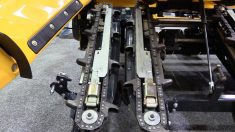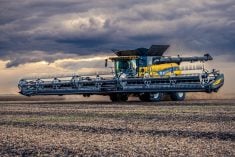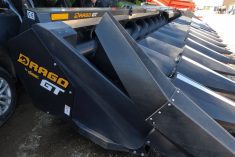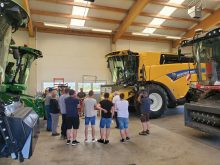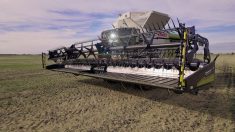Proponents of intercropping (growing two or more crops in the same field simultaneously) claim that system allows for a significant reduction in the typical input costs associated with controlling pest and disease problems in a monoculture environment, and it can significantly boost field yields at the same time. But there are obvious hurdles to overcome in successfully harvesting those fields.
To help address that problem, Saskatchewan-based Flexxifinger recently introduced its FlexxiSelect combine header attachments. Kathryn Sarauer, the company’s sales and support specialist, said that this new product can minimize harvest losses in at least one intercropping regime, which involves blending winter wheat and soybeans.
Read Also
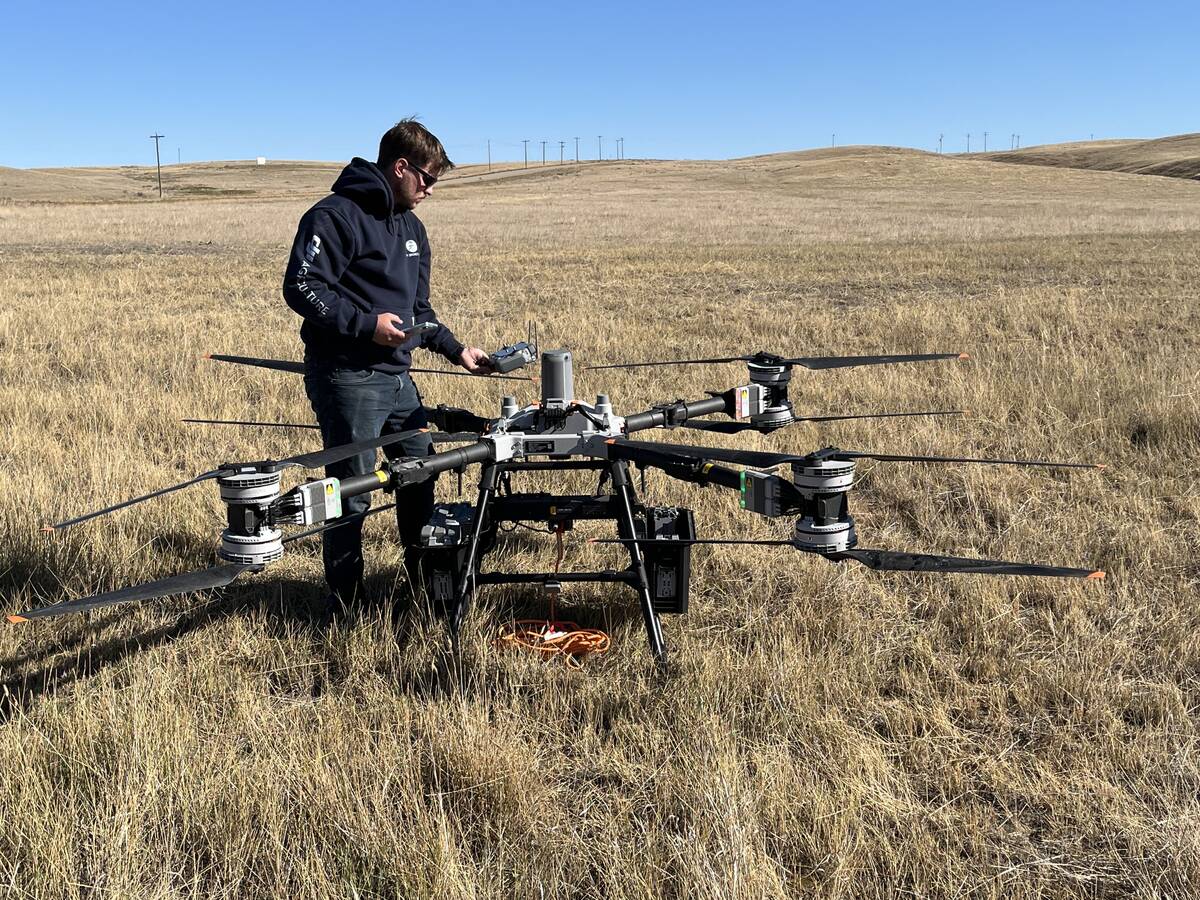
Farm-facing drone does the heavy lifting
Canadian distributor DJI Agriculture unveils its AGRAS T100 drone to western Canada’s producers for greater efficiencies in spraying and granular spreading in fields.
“Our product helps with the harvesting of winter wheat,” she said when discussing it during Canada’s Farm Progress Show in June. Flexxifinger used that show to introduce the FlexxiSelect to farmers. “It holds down the soybeans while we take off the wheat crop. It reduces the damage to the soybeans, because they are usually at flowering during wheat harvest. And if we lose a flower, we lose a pod.”
The FlexxiSelect consists of a plastic paddle that mounts on a standard Flexxifinger crop lifter mount and can be fitted to any combine header. It pushes the soybean plants down below the cutter bar when combining the wheat crop.
“It uses the same end as our crop lifters,” said Sarauer. “It looks a lot like our crop lifters, because half of it is. It has different joints so you can change the height based on your soybeans.”
The company has had the FlexxiSelect in field trials in Illinois. In at least one of those inter-seeded test fields, the grower saw a total production output of 170 per cent of a typical monoculture crop.
“In this particular field, he over yielded by 70 per cent,” she explains. “Seventy-seven bushels per acre of wheat and 35 of soybeans. Most of that is due to the interaction of wheat and soybeans. They require different nutrient and moisture levels and the root zone is different. And because soybeans are a legume, they fix nitrogen.”
Inter-seeded test fields also saw a significant reduction in inputs.
“There’s a 20 to 30 per cent or more reduction in the crop protection products you need,” she added.
Winter wheat can be seeded in the fall and soybeans planted into the same field in the spring.
“In the one we did a lot of research with, wheat was seeded at 15-inch row spacings and in spring soybeans were seeded at 30-inch spacings,” said Sarauer. “It makes kind of a wheat sandwich.”
Retail pricing for the FlexxiSelect hasn’t yet been set, but production is set to begin later this year, with product delivery available in time for harvest 2017.
“It will be ready for harvest next year,” she said. “If people are thinking of doing this, they can seed their winter wheat in the fall and we’ll have these ready next season.”
“I’m especially excited about the whole intercropping thing. The great thing about it is it can be used by conventional farmers, organic farmers, conservation farmers. I think it might be a tool to open up the conversation on how to share our farming practices and work together a little more in the industry.”





